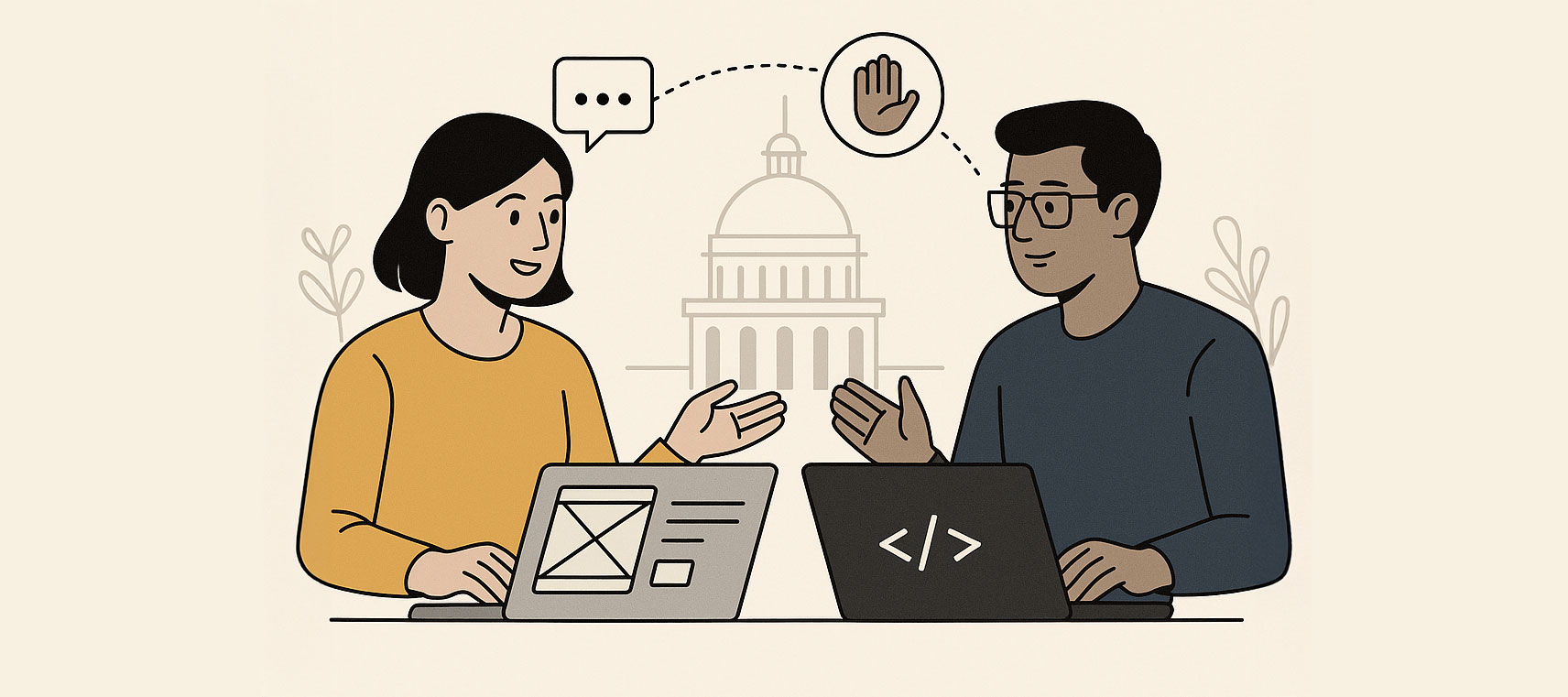As a lead UX/UI designer working in the federal government, I get a front-row seat to something most people don’t realize: government digital services aren’t built by solo geniuses. They’re built—slowly, often messily, but with surprising heart—by teams of people with wildly different skills, sitting at virtual tables together.
Some days, I open my laptop and see the code scroll by in the developers’ chat channel, while my Figma tabs multiply in the background. Our worlds can feel lightyears apart. But when our work comes together—when UX and dev truly collaborate—we get to do something bigger than any single person: we help serve millions of people who depend on us to get it right.
Digital Government Is a Team Sport
Government websites and applications have a reputation, and let’s be honest—it’s not always a good one. Clunky, outdated, hard to use. We’ve all been there, clicking through endless forms, trying to get a simple answer or submit a critical document. Behind those screens, though, are teams trying hard to improve things, and the breakthroughs always happen when designers and developers are in sync.
I’ve seen this firsthand. A while back, my team was tasked with making it easier for tax professionals to access and manage client authorizations through the IRS’s new Tax Pro Account. The legacy process involved paper, fax machines, and endless phone calls. Our challenge: make it digital, intuitive, and accessible—no small feat in a high-stakes, high-security environment.
At first, it was tempting to work in our own silos. I could have mapped out user flows and wireframes, handed them over, and called it a day. But the magic (and the real progress) started when we invited our developers into design reviews from day one. They flagged technical limitations I hadn’t even considered. We brainstormed ways to streamline forms, reduce clicks, and improve accessibility for users with disabilities.
We worked iteratively—sometimes debating a button placement for longer than I’d like to admit. But the results spoke for themselves: tax pros, some of whom had nearly given up on digital tools, sent in feedback saying, “This is actually easy to use.” That’s the kind of win you get when you combine design empathy with engineering practicality.
“This is actually easy to use.”
It’s About Real People—Not Just Pixels and Code
Sometimes in government tech, it’s easy to forget who we’re really serving. But every decision—every little tweak to a screen, every error message rewritten for clarity—affects a real person. Maybe it’s a single mom trying to access benefits, a veteran applying for resources, or a small business owner navigating a tax form. These are the people who need us to get it right the first time.
What I’ve learned is that when designers and developers work together, we can advocate for the user more powerfully. Developers know the system inside out; designers bring the user’s voice to the table. When we’re collaborating, we catch edge cases, root out accessibility bugs, and build experiences that work for everyone—not just the tech-savvy.
Collaboration Isn’t Optional—It’s Essential for the Public Good
In the private sector, good collaboration might mean happier customers or higher revenue. In government, it’s about something deeper: trust. If we fumble, it’s not just an inconvenience—it’s a missed opportunity to help someone, or a barrier that keeps someone from getting what they need.
That’s why I believe designers and developers must collaborate—because together, we can cut through bureaucracy, modernize clunky systems, and make government work a little better for all of us.
So next time you log onto a government site and think, “Hey, this wasn’t so bad!”—know that somewhere behind the scenes, a group of designers and developers worked side by side, united by a shared goal: serving you.

